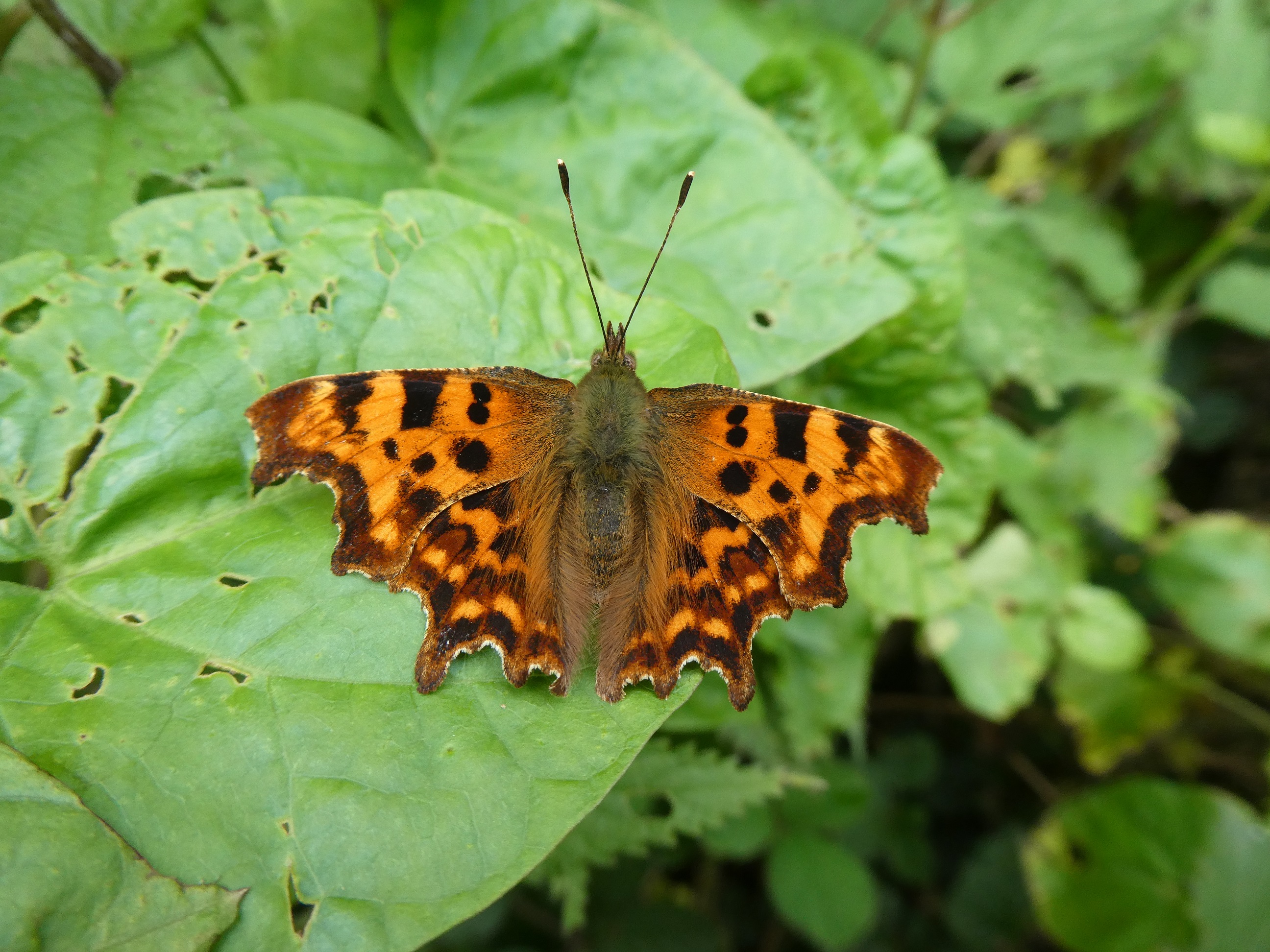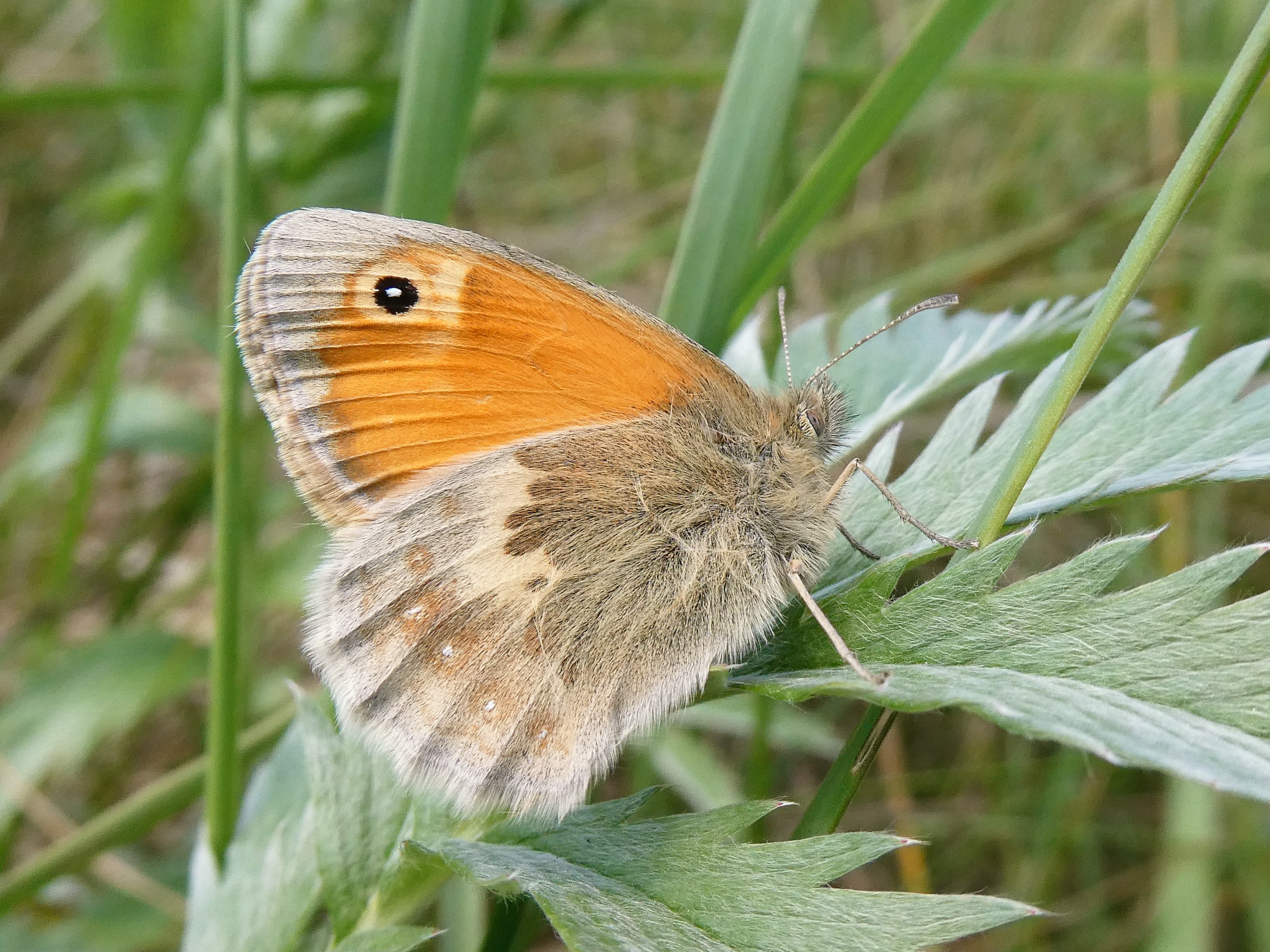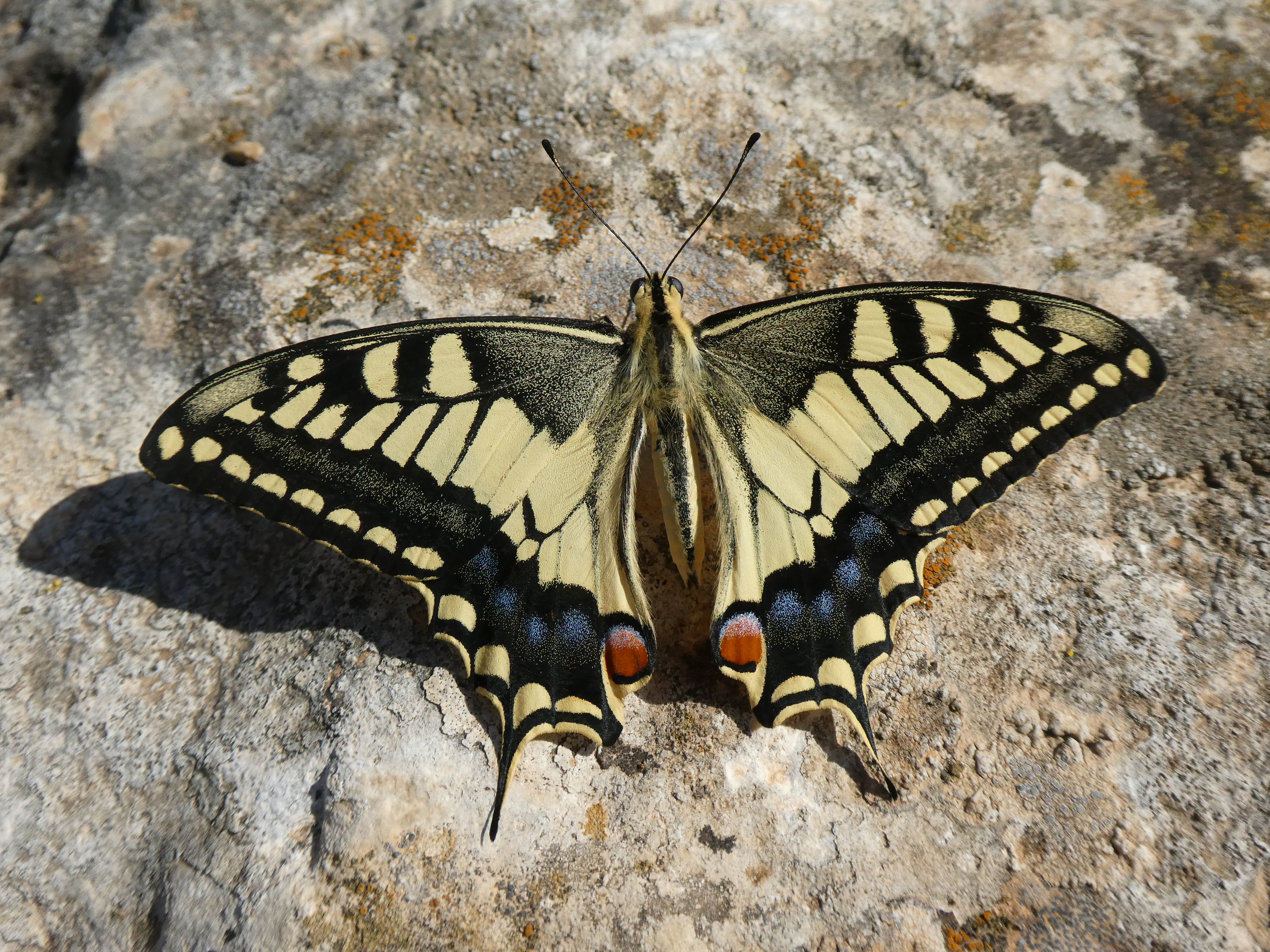Our temperatures are increasing. All the indications show that all our seasons are warmer, spring is arriving earlier, the growing season is lengthening. How good is this for our butterflies? Here we consider just some of the results observed and ponder potential results that may arise from the ongoing climate warming.
Weather conditions play a major role in the abundance levels of our butterfly populations, while climate change plays a deeper role, influencing abundance and distribution of species. Let us start by looking at our three regular migrants. Three migrant butterfly species are considered to recolonise Ireland each year from southern Europe or North Africa: the Clouded Yellow, Red Admiral and Painted Lady. However, nowadays the Red Admiral is commonly present here during winter, blurring the distinction between resident and visiting species. There are also indications that Clouded Yellow larvae and pupae may be overwintering in warm, sheltered spots. This has been recorded in County Wexford.
We may receive new species that are expanding in response to the warming climate. In August 2013, there was a substantial influx of the Long-tailed Blue, with around 30 individual butterflies recorded, predominantly from south and east coast counties of England. In several cases, eggs or larvae were discovered at the same locations and, subsequently, an autumn ‘home-grown’ generation of Long-tailed Blues emerged across southern England, generating sightings of at least 80 individual butterflies spread across eight counties. Although the occurrence of Long-tailed Blue in the UK in 2013 was unprecedented in abundance and distribution, the species is not able to survive our winters and so permanent colonisation is impossible at present. Amazingly, another almost identical influx of Long-tailed Blue occurred in the summer of 2015, again with substantial local breeding and the emergence of a new generation. Milder winters may allow this very successful butterfly to become established in Ireland.
Another candidate for colonisation is the Swallowtail. The Swallowtail a large and spectacular butterfly that, occurs widely in continental Europe and on many off-shore islands. Sightings of this species have increased in southern England. Two were recorded here in recent years, including one last summer. As a highly mobile butterfly, it can reach our island and may become established here if temperatures continue to increase. The species over-winters as a pupa, which may be able to survive our winters as they warm.
We may also receive the Southern Small White as a new species. Until recently, and as its name suggests, this butterfly was confined to southern and especially south-eastern Europe, but it is now spreading rapidly in a north-westerly direction, at the rate of over 100 km per year. It was first found north of the Alps in France and in Germany in 2008 and has since gradually extended its range and was first sighted in the southern Netherlands in 2015. In 2019 it was reliably recorded near Calais in France. So there is only the matter of the 22 miles of English Channel to cross before it arrives on the UK’s shores.
Of course, it may already be in the UK, just not noticed amongst its cousins. This expanding species is likely to be Ireland’s next new butterfly. It breeds on Candy Tuft Iberis sempervirens, commonly grown in gardens, Rock Candy Tuft Iberis saxatilis and Bladderpod Alyssoides ultriculatum, which are also garden plants. It looks very similar to the resident Small White but can be separated from it by looking at the upperside of the forewings. The black wing-tips extend as far down the leading edge or costa as it does along the outer edge or termen. In the Small White, the black wing-tip extends further down the leading edge or costa. The forewing spots are more square rather than rounded and a thin black line extends from the forewing spot (from the forewing spot closest to the wing-tip in the female which has two forewing spots) to the black wing-tip where this extends down the outer edge (termen). If you think that you have seen this butterfly, send us a photograph!
A butterfly success that is associated with increasing warmth is the Comma, unknown as a breeding resident until it was confirmed breeding here in 2014. It is now well established in the south-east and expanding northwards and westwards. It appears to be a matter of time before it is distributed throughout Ireland. Its larva is a solitary feeder, meaning it needs warmer conditions than larvae that feed in groups that help their fellows to absorb heat, like the caterpillars of the Small Tortoiseshell and Peacock butterflies.
The Peacock butterfly, a resident for as long as records can tell us, has increased in abundance in northern parts of Ireland, where it was much scarcer before the 1990s.
Another success being associated with climate ‘amelioration’ is the Holly Blue butterfly. Until the late 1990s, this was mainly restricted to old woodland in milder coastal areas and was very rare outside these areas. Not only is it found throughout much more of Ireland, but it is also producing more generations than it did. E. S. A . Baynes (1964) considered it was single-brooded in the northern half of Ireland and double-brooded in the southern half. Today it regularly produces two generations in some counties in Northern Ireland and three in southern areas, including along the Dublin coast.
Warmer summers appear to be assisting the Marsh Fritillary butterfly, which is usually highly sedentary, especially in wet, cool summers but it will move beyond its colony in warm, dry summers, which was very evident during 2018. The species exists in many areas in a metapopulation, meaning it moves around in the landscape, repopulating sites lost during poor years. To function in this way, the species needs warm weather. Cold May and June weather can destroy colonies, so earlier springs and warmer summers may be an advantage to this endangered butterfly.
But there is always a ‘but’. Warmer drier summers and milder, wetter winters may damage some species even if these conditions benefit others. Take the example of the Small Blue, an endangered butterfly that breeds on one species plant, Kidney Vetch, that only grows in usually poor, well-drained thin and skeletal soils such as on fixed and eroding sand dunes and limestone grassland. These soils dry quickly after a few weeks of hot, sunny weather and the foodplant often desiccates, leaving it useless for breeding. Even more worrying is rising sea levels that can remove coastal dune habitats that are the main stronghold for this tiny butterfly. This is already happening along the east coast, notably at Portrane in Dublin.
More subtle changes are created by climate warming that challenges the survival of butterflies. Milder, wetter winters and earlier and warmer springs prompt plants to remain green and begin growing earlier. While this appears to be good news for some butterflies, this can prevent larvae of some butterflies from developing at an optimum rate to cut down on losses due to natural predation or may prevent some developing, starving to death on their healthy foodplants.
This paradox of heat-loving butterflies declining under a warming climate can be explained by the need of many butterfly and moth larvae for an abundance of dry, senile plant matter which is used for basking to raise their body temperature, allowing for food digestion. This is extremely important for larvae that resume feeding in early spring when air temperatures are low. This problem may be behind the crisis afflicting the Wall Brown, now in freefall across most of Ireland. It has not been seen in Northern Ireland since 2015 and is missing from most areas where it was present before the mid-1980s. I suspect this issue may be influencing the decline of the Small Heath too, for like the Wall Brown the caterpillars are daytime feeders that bask on dry, non-growing plant matter to digest their green food.
The increasingly rapid growth of the larval foodplants creates a shading effect, decreasing ground temperatures, making basking on dry stalks or bare soil impossible (if bare patches will persist for long enough under moister, warmer conditions) unless the caterpillar moves away from the plant which many larvae are reluctant to do.
The constraints on the larval micro-site temperatures may eventually be overcome if climate warming creates air temperatures that are warm enough to allow the larvae to reach the correct body temperature without the need to bask on dry, warm material. However, this is not certain either. One of the drivers of climate warming is the increased level of Carbon Dioxide. This may be affecting foodplant quality.
This is an interesting area of study, and the body of literature on this topic is increasing. At this stage, the picture emerging is that winners and losers will emerge under a warming climate scenario. A study in Germany by Habel et al. entitled Butterfly community shifts over two centuries that tracked butterflies on a dry calcareous grassland site overlooking the Danube from 1840 to 2013 found that changes in the environment associated with industrialisation and climate change are benefiting habitat generalists, especially those that use nitrogen-loving plants and damaging habitat specialists that use plants that are adapted to a low nutrient environment.
However, in Ireland and Britain, we have seen some species that were generalists or that occurred in a broad range of habitats become specialised on a smaller number of habitat types. To add to the mix, one butterfly in Britain, the Brown Argus, that was a habitat specialist has become adapted to a broader range of habitats, a development attributed to the warming climate which has allowed it to exploit foodplants that previously were unavailable because they grow in habitats that were previously to cool for it.
The story told here is a developing one. We can expect colonisation by some species, and some of our current species breeding at higher altitudes than they do now. These are likely to be habitat generalists that are following their climate envelope. What is the future of our habitat specialists, which are generally much rarer? We certainly need to protect their habitats and we need butterfly records to let us know what is happening. We don’t want to lose the plot of this tale. Send us your records, both your casual records and, if you can give the commitment, monitor the butterflies in your garden.
Here is how to provide these records, which will be published on our website and sent to a national database. Send your butterfly and moth records to us by email at conservation.butterfly@gmail.com.
Let us know: your name/s, date of the find, species found, the life stage/s found, the numbers seen, the location the butterfly/moth was found (e.g., townland name, site name, county), and a six-figure grid reference, including the letter identifying the 100,000-metre grid square in which the location lies (see http://www.gridreference.ie/ or Discovery Series maps) weather conditions and any other interesting comments you wish to provide.
Example:
John Smith (14/06/2020)
Small Blue 14, Small Heath 15 at O 254515, Portrane sand dunes, County Dublin. Sunny, light breeze, 18 Celsius.
It will be greatly appreciated if you could send in their records by listing the butterflies observed in the following order:
Small Skipper, Essex Skipper, Dingy Skipper, Common Swallowtail, Wood White, Cryptic Wood White, Clouded Yellow, Brimstone, Large White, Small White, Green-veined White, Orange-tip, Green Hairstreak, Brown Hairstreak, Purple Hairstreak, Small Copper, Small Blue, Common Blue, Holly Blue, Red Admiral, Painted Lady, Small Tortoiseshell, Peacock, Comma, Pearl-bordered Fritillary, Dark Green Fritillary, Silver-washed Fritillary, Marsh Fritillary, Speckled Wood, Wall Brown, Grayling, Hedge Brown/Gatekeeper, Meadow Brown, Ringlet, Small Heath, Large Heath, Monarch.
To count the butterflies in your garden, download our Nation Butterfly Garden Survey form below which explains how to record your garden butterflies. We will send you a report at the end of the year after you send us your survey forms.
National-Garden-Butterfly-Survey




